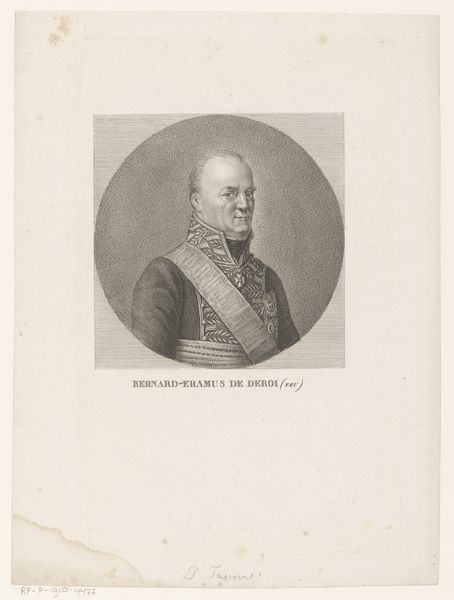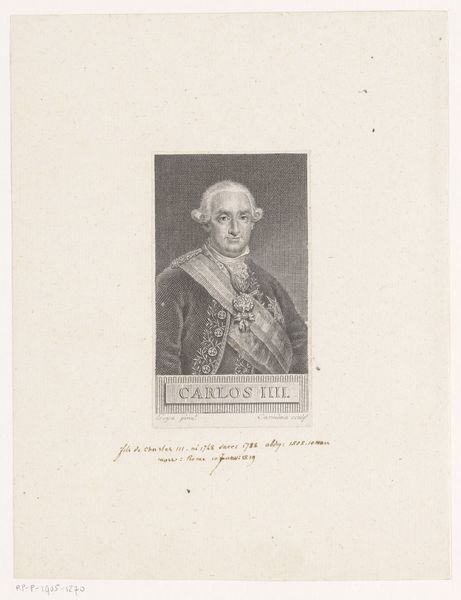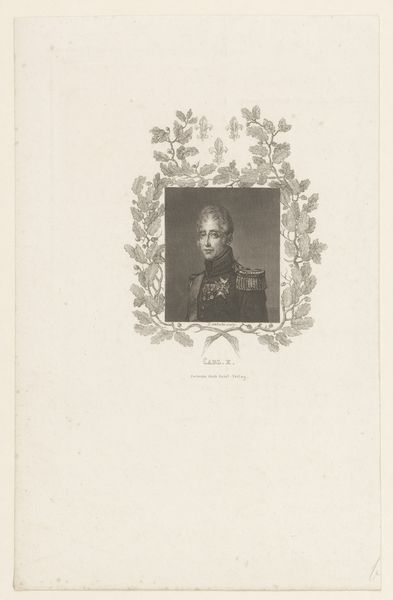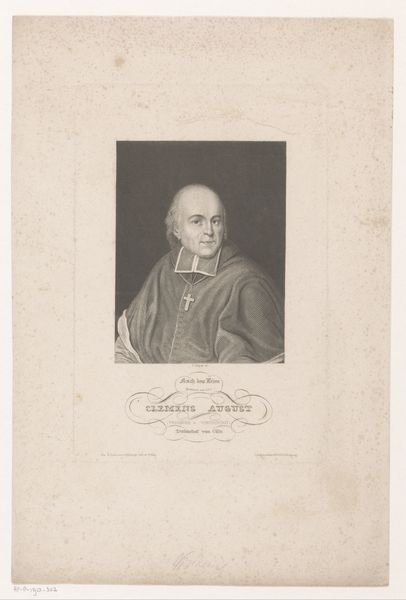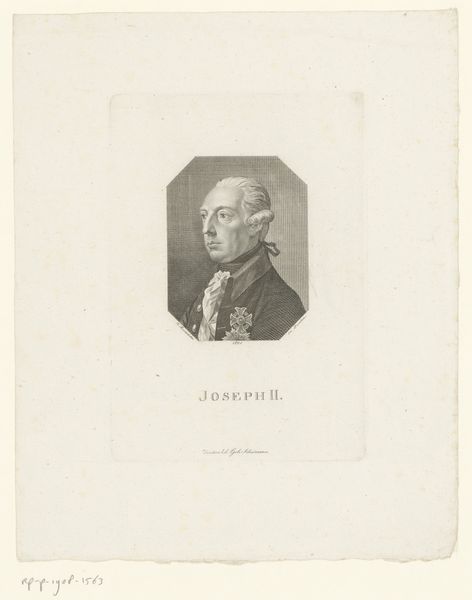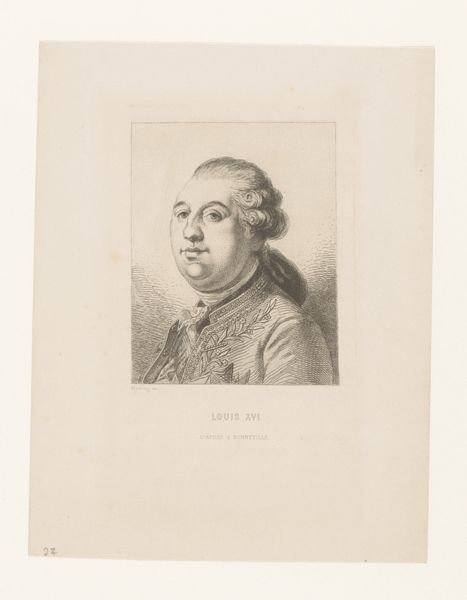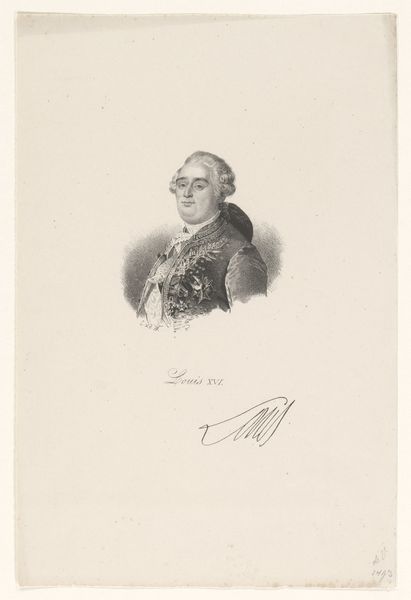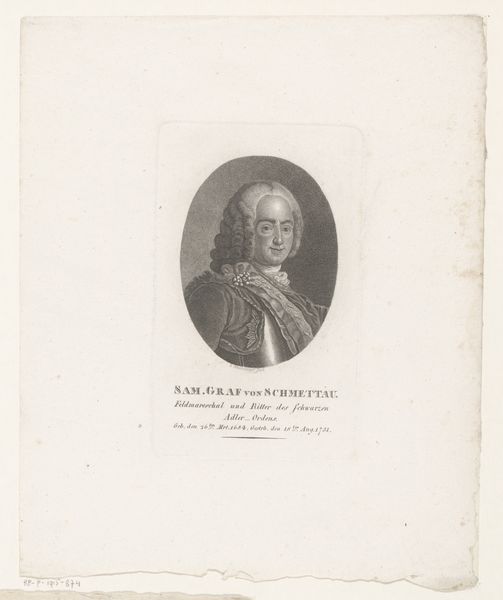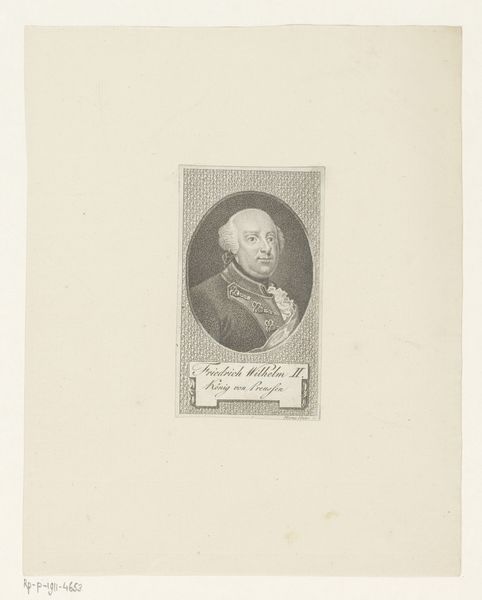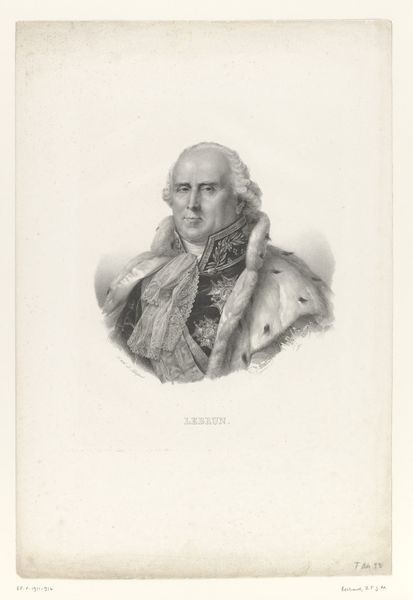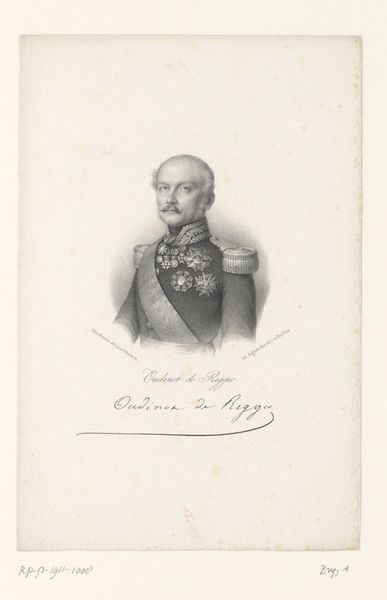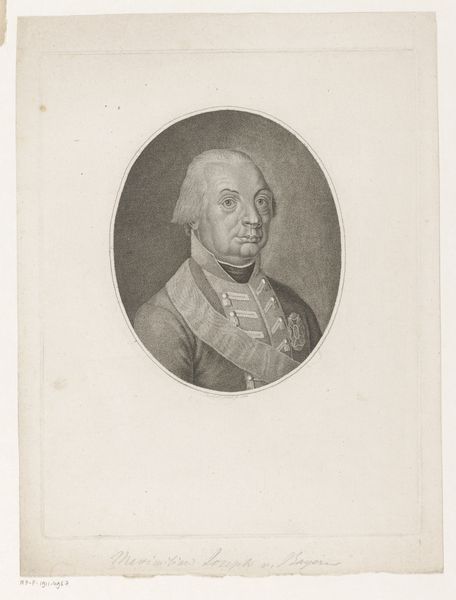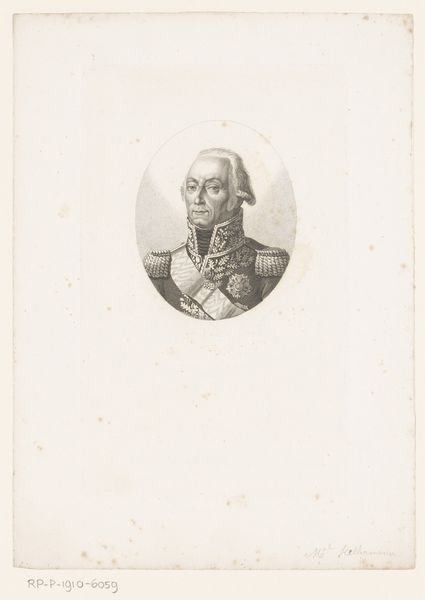
print, engraving
#
neoclacissism
# print
#
history-painting
#
engraving
Dimensions: height 183 mm, width 120 mm
Copyright: Rijks Museum: Open Domain
Editor: So, here we have a print from sometime between 1818 and 1832, Anton Wachsmann's "Portret van Lodewijk XVI, koning van Frankrijk"—a portrait of Louis XVI, King of France. The first thing that strikes me is the weight of history pressing down, the almost ghostly quality of the engraving. What jumps out at you when you look at this piece? Curator: Ghosts, you say? Absolutely! It feels like peering into a half-remembered dream, doesn't it? What strikes me is the way Wachsmann used line and texture, doesn't it almost feel… urgent? Considering this print was created years after Louis XVI’s execution, this image exists as a spectre, a phantom of monarchy. I also think about the rise of Neoclassicism, seeking to resurrect an idealised past to reflect on the tumult of post-revolution Europe. What about you; what sort of phantom does Louis represent in your eyes? Editor: A cautionary one, I suppose. The man lost his head, quite literally. I guess the clean lines of Neoclassicism underscore that sense of order imposed—or perhaps desperately hoped for—after chaos. And there are just so many details crammed onto his jacket – stars, embroidery…a visual feast. It is as if the artist wants us to remember the lost King in all of his splendor. Curator: "A cautionary one." Nicely put! That "feast," as you describe it, is a critical part of his construction! Those embellishments are so loaded—statements of power, pedigree, divine right... do you get a sense that the artist uses this work to play on, almost exploit that weightiness, knowing Louis is, shall we say, already "headless"? Is the splendor masking something? Or hinting at why things collapsed? Editor: Hmm, masking something, perhaps an inherent fragility beneath all that ornamentation. This definitely offers a lot more to unpack than I initially thought. It makes you wonder what details an artist includes and *why*. Curator: Precisely. And by exploring the 'why', we unravel layers of meaning within the art, seeing it both as a record and a reinterpretation of history, no?
Comments
No comments
Be the first to comment and join the conversation on the ultimate creative platform.

